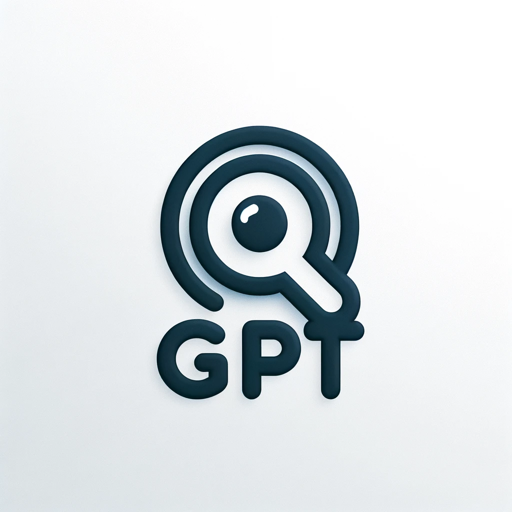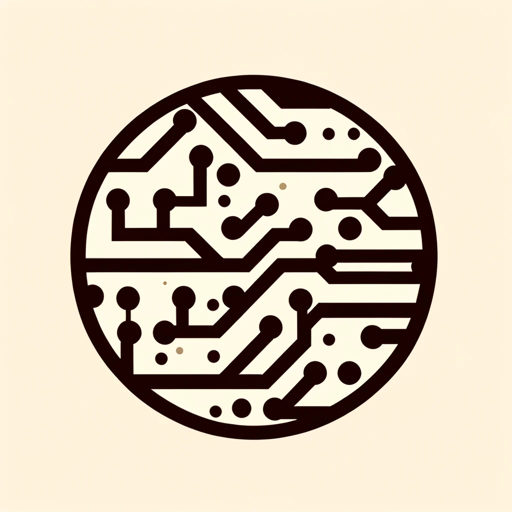typst-AI-driven document creation tool
AI-powered platform for perfect documents
How do I declare a variable in Tyspt?
Can you explain Tyspt's function syntax?
What's the difference between loops in Tyspt and other languages?
Help me understand Tyspt's error handling.
Related Tools
Load More
GPT Finder 🔍
GPT Finder 🔍 is a search tool designed for efficiently finding the best custom GPTs from a selection of over 133,000 GPTs. It initially checks a specialized database and then utilizes Google search if necessary, ensuring that users find the best match amo

FiveM Lua GPT [ESX/QBCORE/OX]
FiveM Lua expert AI for scripting, troubleshooting, and optimizing ESX, QBCore and Overextended frameworks.
GPT használata magyarul
A ChatGPT egy mesterséges intelligencián alapuló chatbot, amelyet az OpenAI fejlesztett ki. Ez a rendszer képes természetes nyelven kommunikálni, válaszokat adni kérdésekre, segítséget nyújtani szövegírásban, információkat keresni, és még sok másban.

Ultimate Fonts & Typography Style Idea Generator
📖🎨 Typography Expert: Font Pairings, Trends, & Design Tool Integration

DanGPT Delingstekster
Bot til korte, varierede Facebook-tekster.

SocionicsGPT
Will mislabel with MBTI and mix up functions at times, but explanations are accurate. Simply correct him and proceed. For questions about practical intertype relations, specify the types AND label (IEI-SLE Duality), then ask away!
20.0 / 5 (200 votes)
Introduction to Typst
Typst is a modern typesetting language designed for creating high-quality documents with a focus on simplicity, flexibility, and automation. It bridges the gap between markup languages like Markdown and traditional typesetting systems such as LaTeX, offering users an easy-to-learn syntax with powerful capabilities. Its primary purpose is to streamline the process of producing beautifully formatted content, such as scientific papers, reports, presentations, and books, without needing extensive configuration. Typst offers a reactive approach to document creation, meaning it updates in real-time as users modify the document. This speeds up the typesetting process and minimizes trial-and-error. Typst’s design focuses on keeping the typesetting process declarative, meaning users can focus on describing what they want instead of how to achieve it. This leads to a more intuitive and user-friendly experience, where layout and design choices are expressed directly through the language itself. Example Scenario: Suppose a researcher is preparing a complex academic paper involving tables, citations, and mathematical formulas. With Typst, the user can combine the simplicity of its syntax with powerful features like automatic equation numbering and easy referencing, making document preparation much faster compared to other typesetting systems like LaTeX.

Main Functions of Typst
Real-Time Preview
Example
As a user types a document, they can immediately see how it will look once formatted. For instance, when writing a scientific paper with equations and diagrams, the preview updates dynamically as the content is modified.
Scenario
Real-time previews are especially useful for writers of technical documents (e.g., academic papers or manuals) who need to see the effects of their typesetting changes instantly. It minimizes the need for constant recompilation like in LaTeX.
Flexibility with Layout
Example
Typst allows users to easily define custom layouts using frames, margins, and columns. For example, when designing a newsletter with multiple columns and embedded images, a user can create a multi-column layout directly in Typst without needing external tools.
Scenario
This function is ideal for designers creating brochures, reports, or magazines, where layout customization is crucial. Typst provides a flexible way to design without switching between a text editor and layout software.
Mathematical Typesetting
Example
A user writing an academic paper can use Typst’s built-in math mode to typeset complex equations like `E = mc^2` or multi-line derivations, without worrying about complex syntax.
Scenario
Typst is particularly beneficial for researchers, mathematicians, and engineers who need to include extensive mathematical expressions in their documents. Its math typesetting is simple yet powerful, providing automatic equation numbering and referencing.
Ideal Users of Typst
Researchers and Academics
Researchers, scientists, and academics benefit from Typst’s powerful features for creating structured documents with complex elements like citations, cross-references, and mathematical formulas. Typst’s user-friendly syntax and real-time preview make it a faster alternative to LaTeX, especially for users familiar with typesetting academic content.
Graphic Designers and Content Creators
Typst’s flexible layout capabilities, which allow users to create multi-column layouts, customized page designs, and embedded images, make it ideal for graphic designers and content creators. These users can benefit from the platform's balance between text-based document creation and customizable visual design without needing external tools.

How to Use Typst: A Simple Guide
1
Visit aichatonline.org for a free trial without login, no need for ChatGPT Plus. Get immediate access to Typst's features without any commitment.
2
Ensure your browser is up-to-date. Typst works optimally on modern browsers like Chrome, Firefox, or Edge. No software download is required.
3
Familiarize yourself with Typst syntax. Visit the tutorial or documentation section on aichatonline.org to learn about the unique syntax and features like math formatting, layout, and automation.
4
Start by creating a new document or importing an existing one. Use Typst’s real-time preview to instantly see how your document will appear.
5
Leverage templates and community guides to create professional documents quickly. From academic papers to presentations, Typst offers a wide variety of use cases and examples.
Try other advanced and practical GPTs
Money Management Mentor
Smart, AI-powered financial advice for everyone.

Experience Cancun Bot
AI-powered guide for Cancun adventures

Fakemon Maker (Essentials)
AI-powered Fakemon creation tool.

学术助手
AI-Powered Academic and Research Assistant

Linked Post Master
AI-powered LinkedIn Post Generation

Brie: Business Analyst Pro
AI-Powered Business Analysis Simplified

PósCiênciaDaComputaçãoBR
AI-powered analysis of academic theses.

Tweeter
AI-powered tweet generation for optimized engagement

RGPD
AI-powered GDPR guidance at scale.
EEAT Analyzer
AI-powered content quality assessment tool

Astrolo.GPT
AI-driven tarot and astrological insights

SWOT Analyst
AI-Powered SWOT Analysis for Strategic Insights

- Academic Writing
- Presentations
- Technical Reports
- Resume Creation
- Publications
Five Common Questions About Typst
What makes Typst different from LaTeX?
Typst is designed to be simpler and more intuitive than LaTeX, while offering similar precision for layout and formatting. Typst uses a less verbose syntax, reducing the learning curve for new users while maintaining professional typesetting capabilities.
Can I use Typst for academic writing?
Yes, Typst is excellent for academic writing. It supports mathematical notations, citation management, and advanced typesetting, making it ideal for writing research papers, theses, and dissertations.
Does Typst support collaboration?
Yes, Typst allows real-time collaboration. You can share documents with others, and they can make edits or suggestions, similar to Google Docs but with better typesetting capabilities.
What file formats can I export from Typst?
Typst supports exporting to PDF as its primary output format. This ensures high-quality, professional-looking documents that are ready for printing or sharing.
Is Typst free to use?
Yes, Typst offers free usage with access to most features. For advanced features or higher customization, premium options may be available, but the basic platform is free to get started.